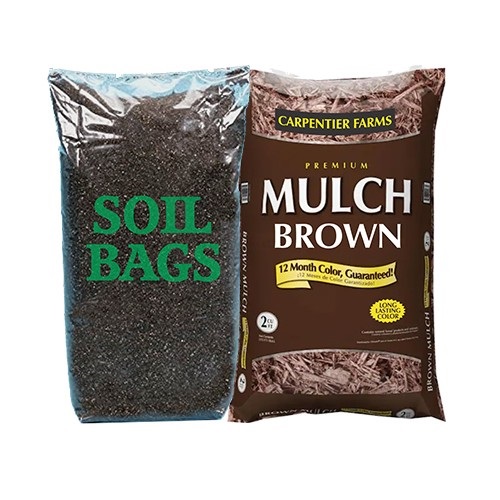Agriculture and landscape bags are used for storing, transporting, and packaging produce. Moreover, they are widely used for various landscape applications such as mulching, soil erosion control, and water conservation.
This way, these bags play an important role to keep the farming and landscaping organized.
If you are new to them, this brief guide will help you know everything about landscape and agriculture bags including types, usage, and benefits.
This way, you can buy the right landscape and agriculture bags.
Let’s get started!
Types of Agriculture and Landscape Bags
There are different types of agriculture and landscape bags available in the market, each designed for a specific purpose. So make sure to learn about them while exploring the farming bags online or at the store.
Some of the common types include:
Woven Polypropylene Bags:
These bags are made from woven polypropylene and are used for storing and transporting grains, vegetables, and fruits. They are durable and can withstand harsh weather conditions.
Net Bags:
These bags are made from mesh material and are used for storing fruits and vegetables. The mesh design allows air circulation, which helps to keep the produce fresh.
Burlap Bags:
These bags are made from natural jute fibers and are used for storing and transporting fruits and vegetables. They are biodegradable and eco-friendly.
Sandbags:
These bags are made from woven polypropylene and are used for flood control and erosion control. They are filled with sand and placed around the perimeter of a property to prevent floodwater from entering.
Geotextile Bags:
These bags are made from synthetic materials and are used for soil erosion control and landscaping projects. They are filled with soil or gravel and placed in strategic locations to prevent soil erosion.
Uses of Agriculture and Landscape Bags
Storage and Transportation of Produce:
Agriculture bags are used for storing and transporting produce such as grains, fruits, and vegetables. These bags protect the produce from damage and help to maintain their freshness.
Soil Erosion Control:
Landscape bags are used for soil erosion control. These bags are filled with soil or gravel and placed in strategic locations to prevent soil erosion.
Mulching:
Landscape bags are used for mulching. These bags are filled with mulch and placed around trees and plants to conserve water and suppress weed growth.
Water Conservation:
Landscape bags are used for water conservation. These bags are filled with soil or gravel and placed around trees and plants to prevent water runoff and promote water absorption.
Flood Control:
Sandbags are used for flood control. They are filled with sand and placed on the entryway of floodwater to create a barrier.
Advantages of Agriculture and Landscape Bags
Durability:
Agriculture and landscape bags are durable and can withstand harsh weather conditions.
Reusability:
These bags are reusable and can be used multiple times.
Cost-effective:
Agriculture and landscape bags are cost-effective and provide value for money.
Eco-friendly:
Burlap bags are biodegradable and eco-friendly.
Versatility:
These bags are used for a wide range of applications associated with farming and landscaping.
How to Choose the Right Agriculture and Landscaping Bags
Determine the Purpose:
First, identify the purpose for which you need the bags. Do you need them for storing and transporting soil, mulch, fertilizer, or other gardening materials? Or are you using them for harvesting crops or transporting produce?
Choose the Material:
The most common materials used for agriculture and landscaping bags are polypropylene, woven fabric, and burlap. Polypropylene is a durable and weather-resistant plastic material that is ideal for heavy-duty applications. Woven fabric bags are breathable and reusable, making them perfect for storing and transporting fruits and vegetables. Burlap bags are biodegradable and offer good air circulation, making them ideal for storing and transporting potatoes, onions, and other root vegetables.
Consider the Size:
The size of the bag will depend on the volume of materials you need to store or transport. Choose a bag that is large enough to hold the material without overfilling it, which can cause the bag to tear or rip.
Check the Strength:
The strength of the bag is important to consider, especially for heavy-duty applications. Make sure the bag has a weight capacity that can accommodate the weight of the materials you plan to store or transport.
Check Durability:
The durability of the bag is important to consider, especially if it will be exposed to the elements for extended periods. Choose a bag that is resistant to tearing, puncturing, and UV rays.
Look for Additional Features:
Some bags may have additional features such as handles, zippers, or drawstrings that can make them easier to use.
THE BOTTOM LINE:
Landscaping and agriculture bags are used for various applications such as storing, transporting, and growing produce. Available in various sizes, they keep the process organized in farming and landscaping. However, it is important to choose the right one for your purpose.

